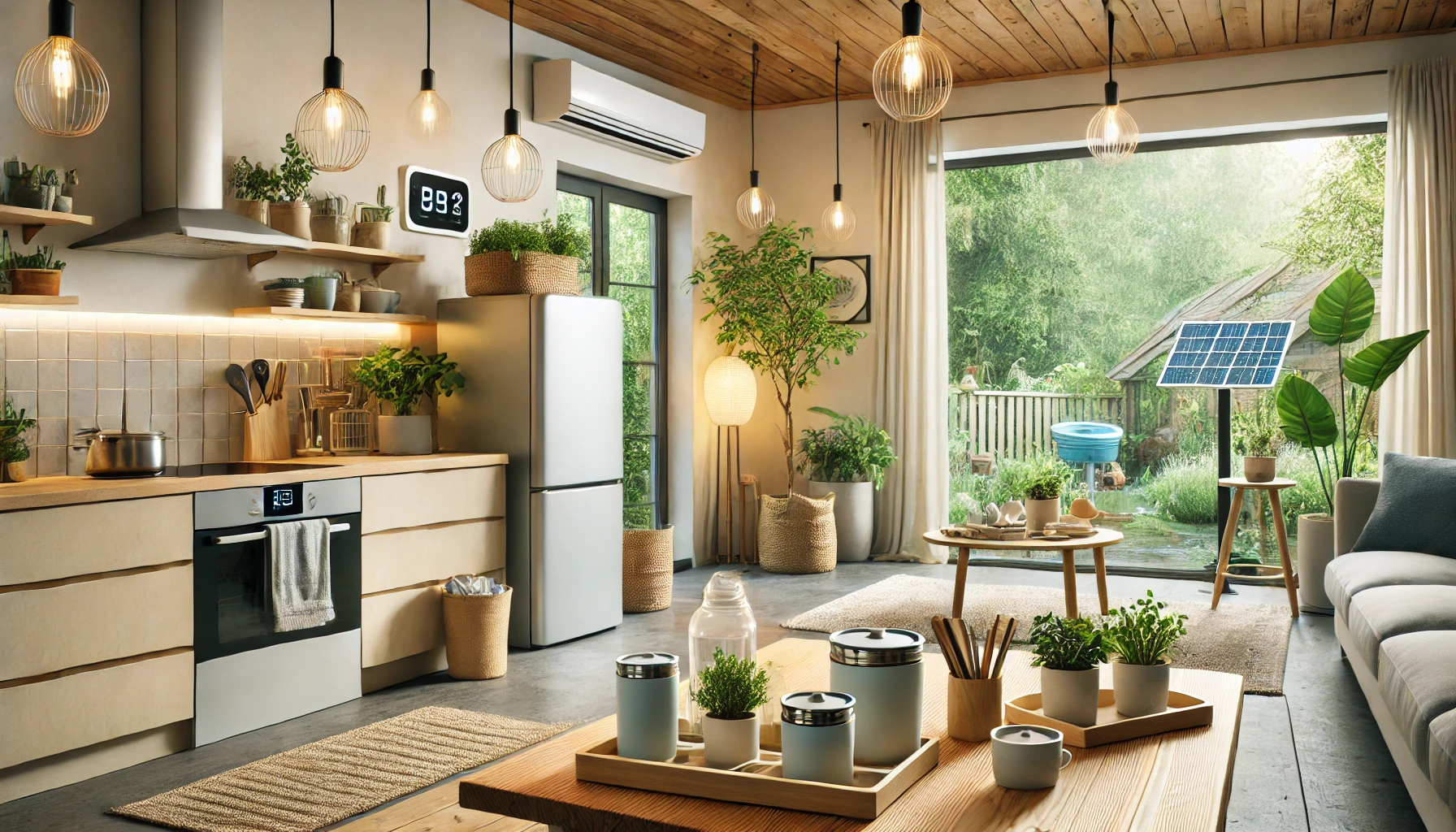As awareness of environmental issues grows, more and more people are looking for ways to make their homes more sustainable. Adopting eco-friendly practices at home not only helps the planet but can also improve your quality of life. You don’t need to make drastic changes to see a big impact. Small, simple changes in your daily routine can make a significant difference over time. In this article, we’ll explore easy ways to make your home more sustainable without feeling overwhelmed.
Start with Energy Efficiency
One of the easiest ways to make your home more sustainable is by improving energy efficiency. This not only reduces your carbon footprint but can also save you money on your utility bills. Here are a few tips to get started:
1. Switch to LED Bulbs
LED bulbs use significantly less energy compared to traditional incandescent bulbs. They last longer and are available in a range of brightness levels and colors, allowing you to create the perfect lighting in your home while saving energy.
2. Unplug Electronics When Not in Use
Many electronics continue to consume energy even when turned off. Unplugging devices or using a power strip to disconnect multiple devices at once can help reduce “phantom” energy consumption.
3. Invest in Smart Thermostats
Smart thermostats allow you to control your home’s temperature remotely and optimize energy usage. This means you can adjust the heating or cooling system when you’re not home, ensuring you aren’t wasting energy when it’s not needed.
4. Seal Windows and Doors
Improper insulation can lead to a lot of energy loss. Check for gaps around your windows and doors and seal them with weatherstripping or caulking. This simple step helps maintain a comfortable temperature in your home without overworking your heating or cooling systems.
Reduce Water Usage
Water is one of the most precious resources we have, and using it efficiently is an essential part of a sustainable home. Here’s how you can reduce water consumption at home:
1. Install Low-Flow Fixtures
Switch to low-flow showerheads, faucets, and toilets. These fixtures use less water without sacrificing performance, helping you conserve water in every room.
2. Fix Leaks Promptly
A small leak can waste gallons of water over time. Check for leaks in your faucets, pipes, and toilets, and repair them promptly to avoid unnecessary waste.
3. Use a Water-Efficient Washing Machine
If your washing machine is old and inefficient, consider upgrading to a water-efficient model. Newer machines use less water and energy, making laundry day more sustainable.
4. Collect Rainwater
If possible, set up a rainwater collection system to use for outdoor activities like watering plants and gardens. This reduces your reliance on tap water and helps conserve resources.
Embrace Sustainable Materials
When it comes to home renovations or even simple decor changes, consider using sustainable materials. Here are a few ideas for incorporating eco-friendly materials into your home:
1. Opt for Recycled or Upcycled Furniture
Instead of purchasing brand-new furniture, look for recycled or upcycled pieces. This reduces the demand for new resources and reduces waste. You can even repurpose old furniture to create a unique look in your home.
2. Choose Natural, Non-Toxic Paints
Traditional paints often contain harmful chemicals that can negatively impact both your health and the environment. Look for paints labeled as non-toxic or low-VOC (volatile organic compounds) to ensure better indoor air quality and reduced environmental impact.
3. Use Bamboo or Cork Flooring
Bamboo and cork are renewable materials that make great flooring options. They are both durable, eco-friendly, and stylish, making them ideal for sustainable home renovations.
Reduce, Reuse, and Recycle
As a part of your daily routine, make a conscious effort to reduce, reuse, and recycle. This can be a simple yet effective way to minimize waste and ensure that materials are being properly managed.
1. Reduce Single-Use Plastics
Cut down on single-use plastics by using reusable bags, containers, and utensils. Consider switching to items made from glass, stainless steel, or bamboo to reduce your dependence on plastic.
2. Recycle Properly
Ensure that you’re recycling correctly by sorting items and following your local recycling program guidelines. Many products, like paper, glass, and certain plastics, can be recycled and reused in the manufacturing process.
3. Repurpose Household Items
Instead of throwing out old items, think about how they can be repurposed. Old jars can be used for storage, worn-out clothing can be turned into cleaning rags, and leftover wood can be used for DIY projects.
Sustainable Food Choices
Making sustainable food choices is another key aspect of a more eco-friendly lifestyle. You don’t have to change your diet drastically, but making small adjustments can have a big impact on your overall environmental footprint:
1. Buy Local and Seasonal Produce
Support local farmers by buying produce that is in season. Local and seasonal foods require less transportation and are typically grown using more sustainable practices.
2. Reduce Meat Consumption
The production of meat, especially red meat, has a significant environmental impact. Reducing meat consumption, even for a few meals each week, can help lower your carbon footprint.
3. Compost Your Food Scraps
Instead of throwing away food scraps, start a compost bin. Composting reduces waste and provides nutrient-rich soil for your garden, helping you grow your own food more sustainably.
Conclusion: Small Changes Lead to Big Impact
Making your home more sustainable doesn’t require a complete overhaul. By making small, intentional changes, you can create a more eco-friendly living space that benefits both the environment and your well-being. From energy-efficient appliances to sustainable materials and mindful consumption, every step counts. Start with one change today, and over time, you’ll be amazed at the difference it makes in your home and beyond.
